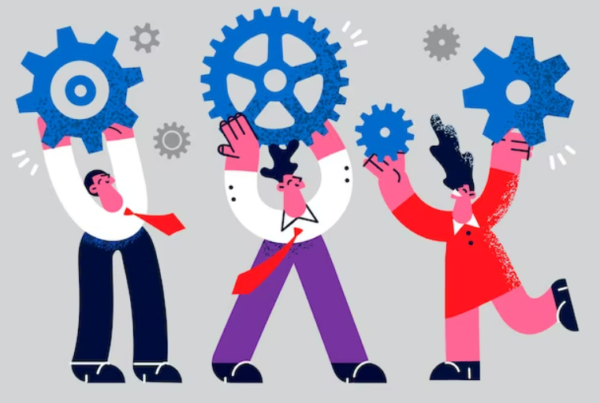Under duress, we revert to type – to the behaviors that come most naturally to us and that we are most comfortable with. When people are under a lot of stress for a long time, they develop coping mechanisms that can hide a true condition like burnout.
Burnout is frequently perceived as equivalent with “needing a break.” As a result, a variety of corporate bandages have been tried, ranging from yoga and mindfulness seminars to activities to counteract zoom fatigue while working from home.
Burnout, on the other hand, is a complicated, long-term weariness caused by continuous emotional, physical, and mental stress. Feeling distant and overwhelmed, having a cynical view, self-doubt, and procrastination are all examples.
Burnout was recognized by the World Health Organization (WHO) as an occupational phenomena affecting mental and physical health in 2019.
In other words, the issues are rooted in our professional lives, and the solution is as well. While going to a yoga session can provide momentary stress relief, the core reasons of burnout have yet to be addressed and are still lurking in the office.
Burnout is a significant threat to an organization’s economic line, aside from clear moral commitments to employees. Companies who do not engage in employee well-being have higher staff turnover, lower productivity, and higher healthcare expenses, according to the American Psychological Association (APA).
However, dealing with burnout has its own set of issues. The topic is fraught with delicate concerns surrounding mental health and welfare, and it can be difficult for managers to know what to look for and how to effectively assist their employees.
The causes and indicators of burnout will be discussed in this article, as well as how to recognize them in patterns of observed behavior at work and how to prevent burnout in teams using the Belbin approach and reports.
What causes burnout, then? You could be pleasantly surprised
According to a recent study, the top five causes of burnout are:
- Workplace discrimination. When employees lose faith in their bosses or coworkers, the psychological link that binds them to their jobs is shattered.
- Workload that is unmanageable. Even high-performing employees sometimes struggle under the weight of an overflowing inbox.
- There is a lack of definition of roles. Only 60% of employees know what is expected of them at work, and the disconnect between expectations and reality can be harmful to both the manager and the individual.
- A manager’s lack of communication and assistance. Employees who feel supported by their boss are 70% less likely to become burned out.
- Unreasonable time constraints. Employees who feel they have enough time to accomplish their task frequently or always are 70% less likely to experience burnout.
How can we tell if a team member is burnt out?
Belbin can help you get a head start because it measures work-related behavior.
These patterns of behavior can reveal coping methods. Our coping techniques can have a variety of roots, but they all present themselves in particular behaviors. If a manager is keenly aware of what is going on with various team members, they can use this information to assist them ask the proper questions.
If a manager is keenly aware of what is going on with various team members, they can use this information to assist them ask the proper questions.
Team Role burnout
Here’s an example of how people with each Team Role strength could exhibit burnout symptoms.
(The usual disclaimer applies: we’ve broken it down by role to keep things simple, but we all have a mix of Team Role skills.)
Feeling less productive than we would want is one of the most common symptoms of burnout. Increased irritation is likely to be an outward indicator of burnout for a goal-oriented high Shaper. They might push for more action than is required, which could alienate the team or lead to reckless decisions.
Inquire as to what irritates them. Do they have the impression that things aren’t progressing as rapidly as they would like? Is there anything they can do right now to satisfy their need to be ‘doing’?
Those who have Completer Finisher qualities are more prone to be anxious than those who have other Team Role strengths. They have a hard time delegating work to others (whose standards may differ from their own), so they are among the most prone to be burned out as a result of a high workload. When this is combined with time constraints, people may feel compelled to sacrifice quality in order to fulfill deadlines, adding to their worry.
Inquire about their work schedule. Boundaries must be crystal apparent. Others can assist them in taking things as far as they can. For example, rather of leaving papers unchecked or even half-finished, check for errors before leaving the Completer Finisher to do the last sweep. To avoid last-minute rushing, inform them of deadlines as soon as feasible.
If the Completer Finisher is overburdened by work, those with Teamworker as one of their primary jobs are overburdened by people, resulting in emotional exhaustion. They’re likely to be intensely aware of all the strains in the team, and they’ll be trying to help resolve the inevitable conflicts that will inevitably arise, frequently at the risk of their own health.
Inquire about their needs, and if they deflect to the team’s, bring out this pattern. To relieve some of the pressure, they may require someone else to take a turn as the listening ear.
Those with strong Implementer behaviors have a hard time responding successfully to change and are more likely to cling to policy and order while things are breaking apart around them. They keep their heads down and cling to old processes, even if they are inefficient or antiquated.
Inquire about what works effectively and how processes could be altered to better support their work. Changing things about and yanking the rug out from under them is unlikely to help.
Plants are prone to withdrawing into themselves and becoming lost in their own thoughts. They may lose sight of what the team requires of them (if they ever did! ), and as a result, their suggestions may be inappropriate or irrelevant.
It’s critical to have open channels of communication. Inquire about what they’re working on and how it ties to the team’s problems. Would they benefit from meeting with the team’s Monitor Evaluator on a more regular basis to analyze the viability of their plans (with a little help from a Co-ordinator)? This may help them avoid feeling frustrated or as if no one is paying attention to their suggestions.
Those who score well on Monitor Evaluator are more likely to struggle under time constraints, as they require time to think things through before acting, and they don’t like being rushed. They may get indifferent and withdraw from the process if sufficient care is not taken, believing that the project in question is a meaningless exercise if things aren’t going to be done properly.
It’s critical to recognize the challenges of balancing rapidly changing conditions with adopting the best course of action. Inquire about the aspects of their job that they find most interesting, and how these qualities may be incorporated into new initiatives.
,
The Co-ordinator, as the team’s conductor is to keep everything – and everyone – together. However, the woodwind section is off on its own, and half of the orchestra has skipped the chorus. Instead of becoming irritated, they’re more likely to shrug and walk away, metaphorically speaking. Employee engagement suffers as a result of this.
Inquire about the team’s talents and whether people’s skills are being used to their full potential. Explain that others may have their heads down because they’re trying to cope in their own manner, not because they don’t recognize the value of the wider picture.
The sound of shattered crockery is likely to be heard by those with Resource Investigator high on their profile. Something has to give because there are too many plates whirling. People with this strength are likely to be more aware of what is going on in the outside world, but rather than re-energizing them, interaction with others depletes them. It’s hardly surprising that you’ll feel overwhelmed as a result.
Ask them which plate they can let go of or delegate to someone else, especially if it involves follow-up or routine work that they are likely to find tedious. Find out whether there’s a project or concept that still piques their interest and, if possible, let them run with it.
Specialists are more prone to immerse themselves in their work or research, putting on real or metaphorical headphones to drown out the rest of the world. The difficulty with this is that no one can check whether their contribution is relevant to the team, resulting in work going to waste. And an unsatisfied Specialist is one whose competence is not recognized.
Make frequent communication a priority, and establish clear role limits and expectations. Inquire about their current projects. Demonstrate your interest and explain how it will benefit the team.
Team Roles, on the other hand, can only carry us so far. They are not a cure-all, and many other reasons, both professional and personal, can contribute to burnout.
The correct questions to ask
The good news is that many of the factors that contribute to burnout can be addressed — and in the workplace.
“Burnout may be avoided,” according to Harvard Business Review. It necessitates “better data,” “asking more timely and relevant inquiries,” and “excellent organizational cleanliness.”
Salary, working conditions, corporate policy, and working relationships are all examples of cleanliness in this context.
Being given tough work; being recognized for achievements; being given responsibility and the opportunity to perform something significant; being involved in decision-making; and feeling important to the organization are all motivators.
The Belbin report comes into play here.
Belbin is in a unique position to assist you in identifying the appropriate questions to ask. As a work-focused, evidence-based behavioural tool, it enables you to open up potentially difficult talks in a neutral and safe manner, focusing on an individual’s strengths and contributions while also giving them space to discuss what isn’t working well at work.
It provides a number of practical discussion-starters and questions that can provide a route into talking about more multivalent concerns for folks who are overwhelmed and don’t know where to begin describing the complexity and breadth of burnout.
Belbin Team Role Feedback Individual Report
- Examine their assets.
- Begin by discussing the person’s contribution to the team and the significance of their work.
- The Team Role Feedback page of the Belbin Individual report delves deeper into someone’s contribution and may aid in determining what they appreciate most about their job.
- Then, look at the qualities that others see in them. Is there anything that catches their attention?
- Discuss their dissatisfactions.
- Is there anything that requires the person to play outside of their position (creating ‘Team Role Strain’)? Or is it possible that their skills are undervalued by a team with a diverse range of Team Role contributions?
The Belbin Individual reports’ Placement Suggestions and Suggested Work Styles sections come into their own here. Is the individual able to devote a significant amount of time to such styles? How does their ideal working environment compare to the one they have now? Are there any ‘fast wins’ that could be implemented?
Examine the entire team
- If work needs to be reallocated (for example, due to overburdening workloads), you’ll need to know where it can go. To put it another way, you need to be aware of the team’s strengths.
- If some working relationships are producing problems (for example, individuals with extremely similar or opposite Team Role behaviors frequently clash), the Team report can help to identify them.
- It’s especially important looking at the ‘Comparison between Individual and Team’ page to discover if the team is relying on one person to fulfill a certain Team Role.
- Make a comparison between the person and the job.
- If you don’t know what their job comprises or if your understanding of the position disagrees with someone else’s, it’s tough to communicate role boundaries and expectations to them.
The Belbin job reports allow you to characterize a job in Team Role terms so that you may compare them to the jobholder and assess their synergy. This might show you where the job is pushing an individual out of their role, or where their latent strengths aren’t being used to their full potential.
The traffic light system provides a quick snapshot of where an employee may be out of sync with job objectives, allowing for further in-depth gap analysis and talks.
Don’t make any guesses
It’s far too easy to manage others the way we’d like to be handled. However, if you’ve put together a diverse team, you might anticipate burnout symptoms to be as diversified, making it more difficult to recognize.
It’s critical that we pay attention to what others require rather than making assumptions. Some remedies are straightforward and practical, while others may necessitate more significant modifications to ‘the way things are done around here.’
In either case, burnout can affect anyone, including top performers, and ignoring it is considerably more expensive than dealing with it — both personally and professionally.
To combat burnout, you must collect data and use it to ask the proper questions.




